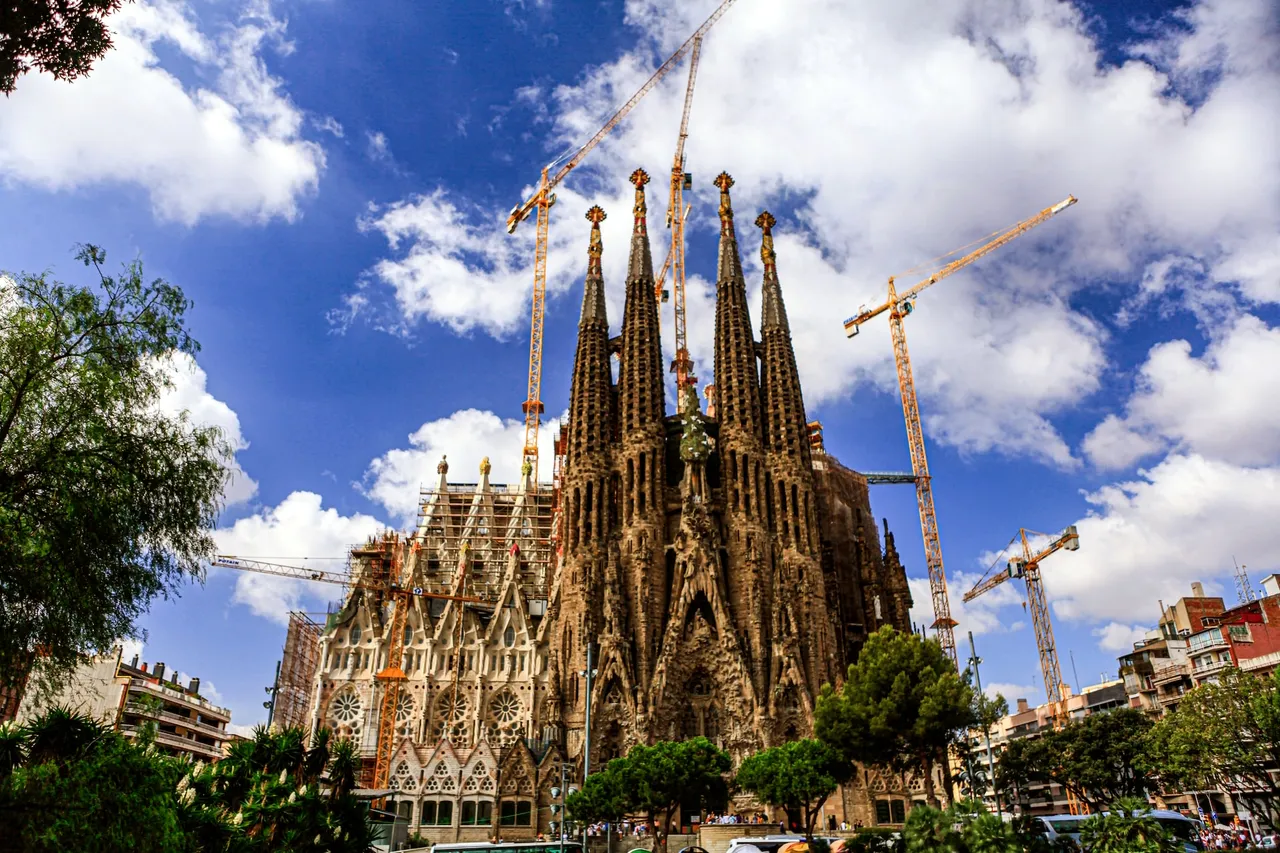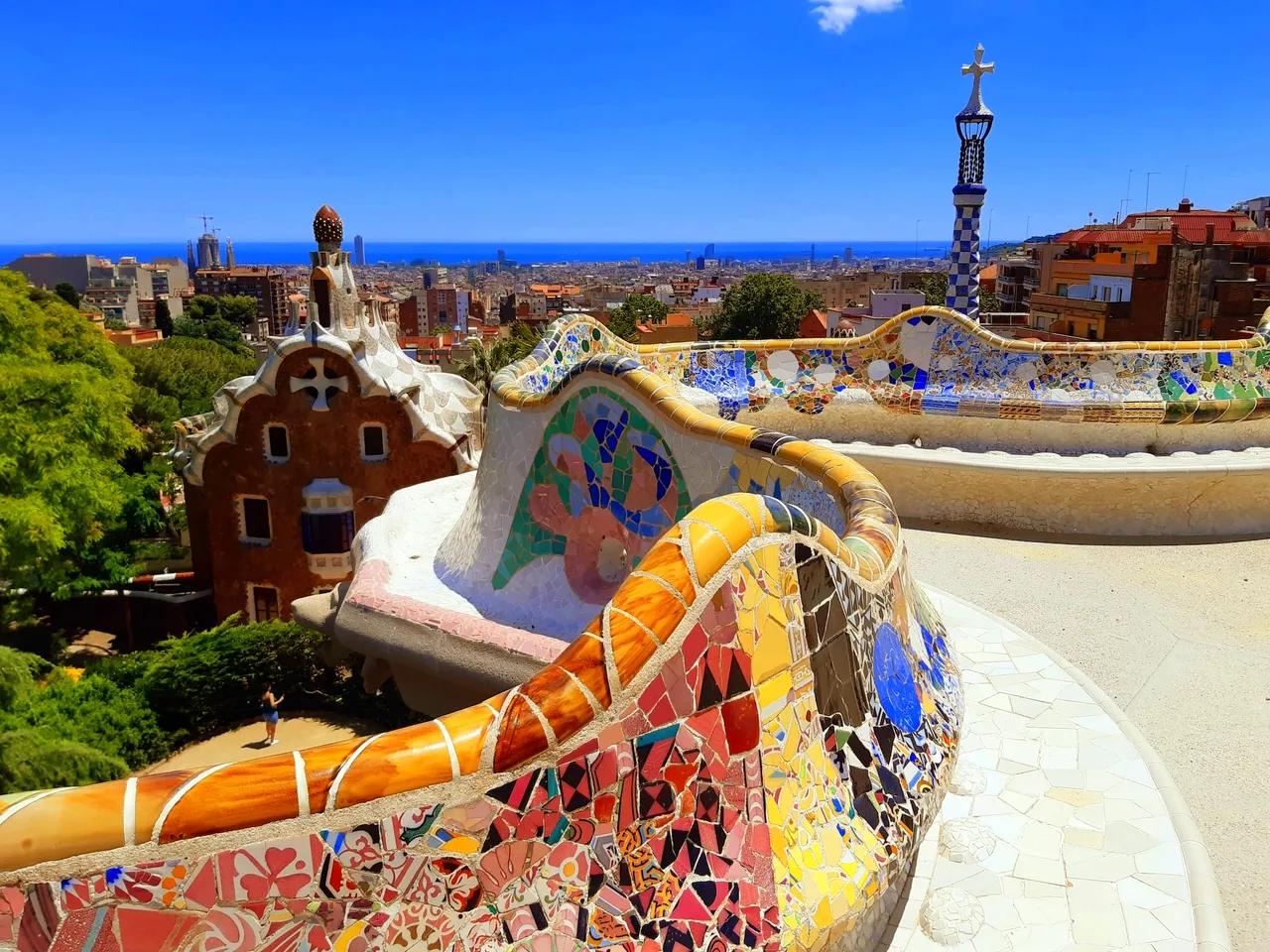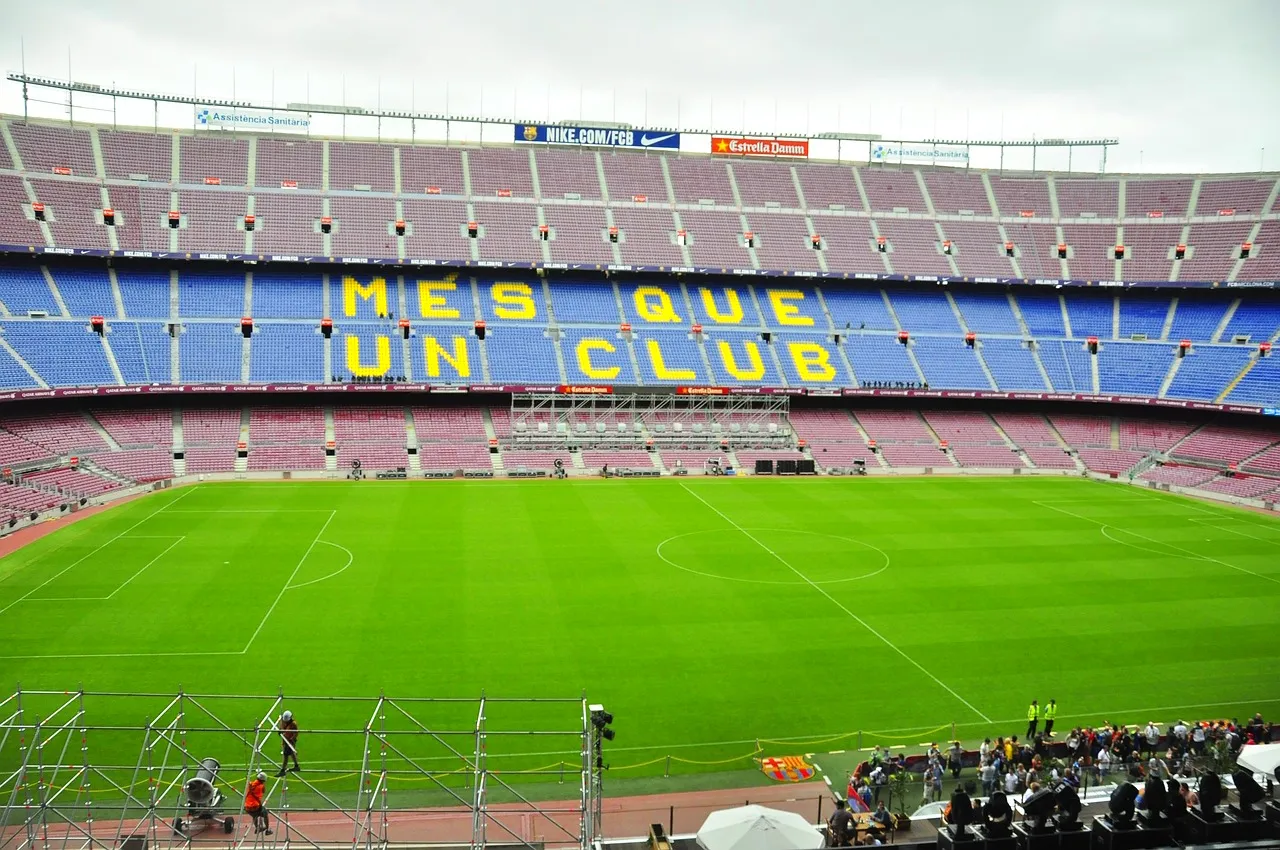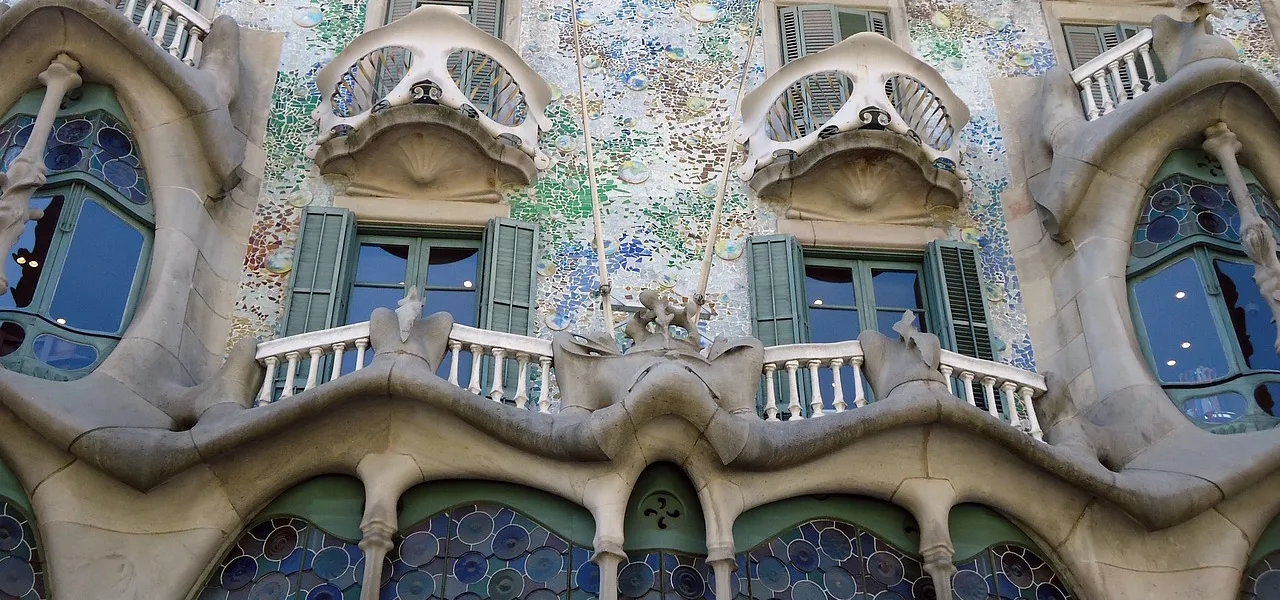Palau Güell: A Glimpse into Gaudí’s Early Work and Genius
Palau Güell is a magnificent example of domestic architecture in the context of Art Nouveau. Located in the heart of Barcelona, this urban palace was one of the first important commissions Antoni Gaudí received at the start of his career. Commissioned by Eusebi Güell, an industrialist, politician, and patron of the arts, Palau Güell served as an extension of the family home on La Rambla. Today, it stands as a testament to Gaudí’s innovative conception of space and light and is a must-see attraction for tourists visiting Barcelona.
Innovative Approach to Architecture and Design
Palau Güell is a stunning example of Gaudí’s innovative approach to architecture and design. Built between 1886 and 1890 for Eusebi Güell, the urban palace is a testament to Gaudí’s ability to create functional spaces that were both beautiful and practical.
Ground floor
The ground floor of Palau Güell served as the entrance to the palace and was also used for various services. The entrance to Palau Güell was through double doors from the street. The doorman and coachman services were carried out from this floor.
This floor accommodated several essential areas, namely: the coach house housing the carriages, a storage space for farming products, the doorman’s quarters, conveniently connected to the stable via a spiral staircase, a street-facing booth allowing the doorman to observe the surroundings, and a servants’ staircase facilitating access to the other floors of the Palau from the ground level.
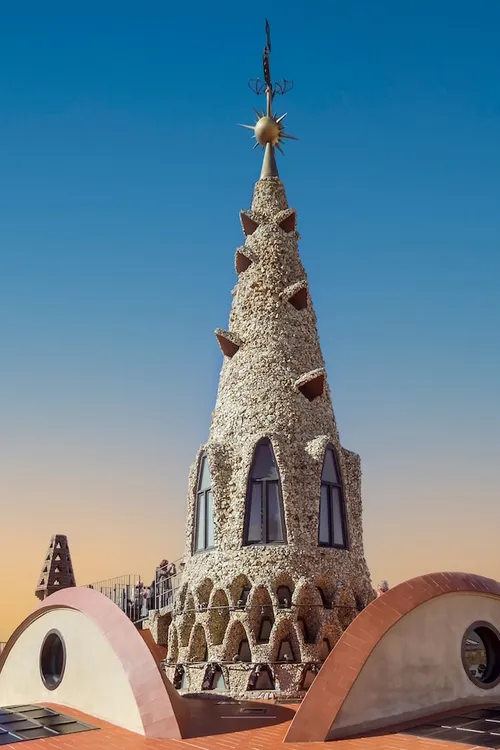

Main Facade
One of the most striking features of Palau Güell is its main facade. The building’s exterior is adorned with intricate stone and wrought iron work, showcasing Gaudí’s mastery of traditional materials. The main entrance is particularly impressive, with its parabolic arch and ornate iron gates. The main facade features two parabolic entrance arches closed by two huge wrought iron gates. Additionally, wrought iron adorned the outer railings of the windows and embellished the coat of arms of Catalonia, topped with a helmet featuring a phoenix.
The facade is built entirely of Garraf limestone (from the Garraf region in Catalonia) and is divided into three levels, interrupted on the right-hand side to blend with the house next door. On the first two levels, the stone is saw cut and polished, while on level three it was treated with a punch. On level two, the main floor’s bay window projects over the street.
Interior Spaces
Inside, Palau Güell is a labyrinth of rooms and spaces, each designed with a specific purpose in mind. The building was intended to serve as both a family home and a venue for the Güell family’s cultural and social events. As such, Gaudí created a variety of spaces that could accommodate both intimate family gatherings and large public receptions.
Central Hall
One of the most impressive spaces in Palau Güell is the central hall. This large room was designed to host concerts and other performances and features a stunning domed ceiling with small openings that allow natural light to filter in. The ceiling is decorated with intricate patterns and motifs, creating a beautiful play of light and color on the walls and floors. The central hall also boasts a grand staircase leading up to the upper floors of the building, adding to the sense of grandeur and elegance. Overall, the central hall is a testament to the creativity and skill of its architect, Antoni Gaudí.
Roof terrace
On the roof terrace of Palau Güell, Antoni Gaudí turned traditional chimneys into genuine sculptures, with bases, stacks and caps in fantastic shapes. There are twenty chimneys altogether. In the middle of them is the 15-meter high spire, which tops the dome of the central hall and is covered in an original recycled stone.
The distinctive chimneys are so typical of Gaudí’s style and were installed on the roof in 1895. They also serve to ventilate the house. The rooftop terrace offers visitors a unique perspective on Gaudí’s innovative approach to architecture and design.
Innovative Use of Light
Another notable feature of Palau Güell is its use of light. Antoni Gaudí was known for his innovative approach to lighting, and this is evident throughout the building. The central hall, for example, features a series of stained glass windows that allow natural light to flood the space. Elsewhere in the building, Gaudí used skylights and other clever design features to bring light into even the darkest corners.
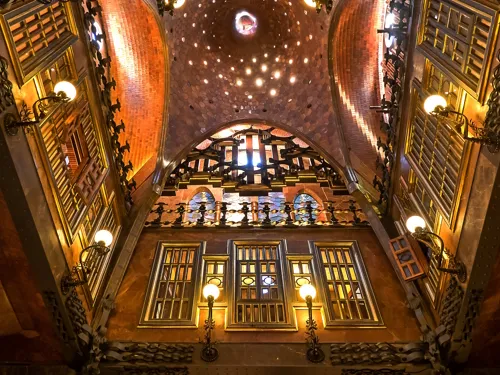
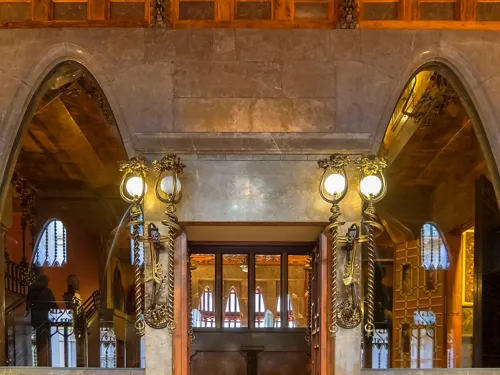
Traditional Materials
In addition to its innovative use of space and light, Palau Güell is also notable for its use of traditional materials. Gaudí was a master at working with stone, wood, wrought iron, pottery, glass, and other materials, and this is evident throughout the building. From the intricate stone carvings on the facade to the beautiful wrought iron work on the balconies and staircases, Palau Güell is a showcase of Gaudí’s skill as an architect and designer.
The history of Palau Güell
Palau Güell was commissioned by Eusebi Güell and served as the home of the Güell i López family until they moved to Park Güell. Over the years, Palau Güell has been recognized for its architectural and historical significance. In 1969, it was declared a historical-artistic monument by the Spanish Government. In 1984, it was designated a Cultural Asset of National Interest by the Catalan Government and a World Heritage Site by UNESCO.
Today, Palau Güell stands as a testament to Antoni Gaudí’s innovative approach to architecture and design. As an early work among the many works of Antoni Gaudí, the building contains the essence of Gaudí’s later works and is fundamental to understanding his architecture. In the words of Antoni Gaudí himself, “originality consists in returning to the origin.”
To summarize, Palau Güell is a testament to Antoni gaudí’s genius and a shining example of his innovative approach to architecture and design. gaudí designed this urban palace to be both beautiful and functional, and a visit to it is sure to leave a lasting impression on anyone who appreciates art and beauty.
What’s the best way to get to Palau Güell?
Palau Güell is located in the heart of Barcelona’s Raval district and is easily accessible by public transportation. You’ll find Palau Güell just a short distance away from some of the city’s most important attractions such as La Rambla, Plaça Catalunya, and the Gothic Quarter.
The best way to get to Palau Güell depends on your location and personal preferences. If you’re staying in central Barcelona, you can easily walk to the palace. Alternatively, you can take the metro to Liceu station on line 3 (L3) or Drassanes station on line 3 (L3), both of which are a short walk away from Palau Güell.
Address: Carrer Nou de la Rambla, 3-5, 08001 Barcelona
